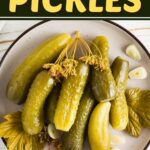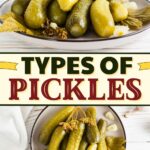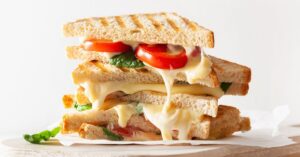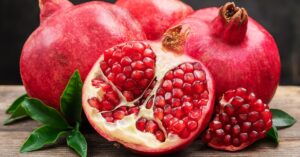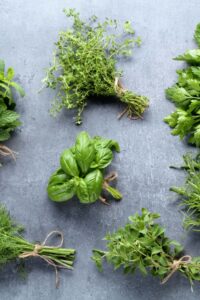Ever wondered how many types of pickles there are out there? Think pickles are just dill or bread and butter?
Think again!
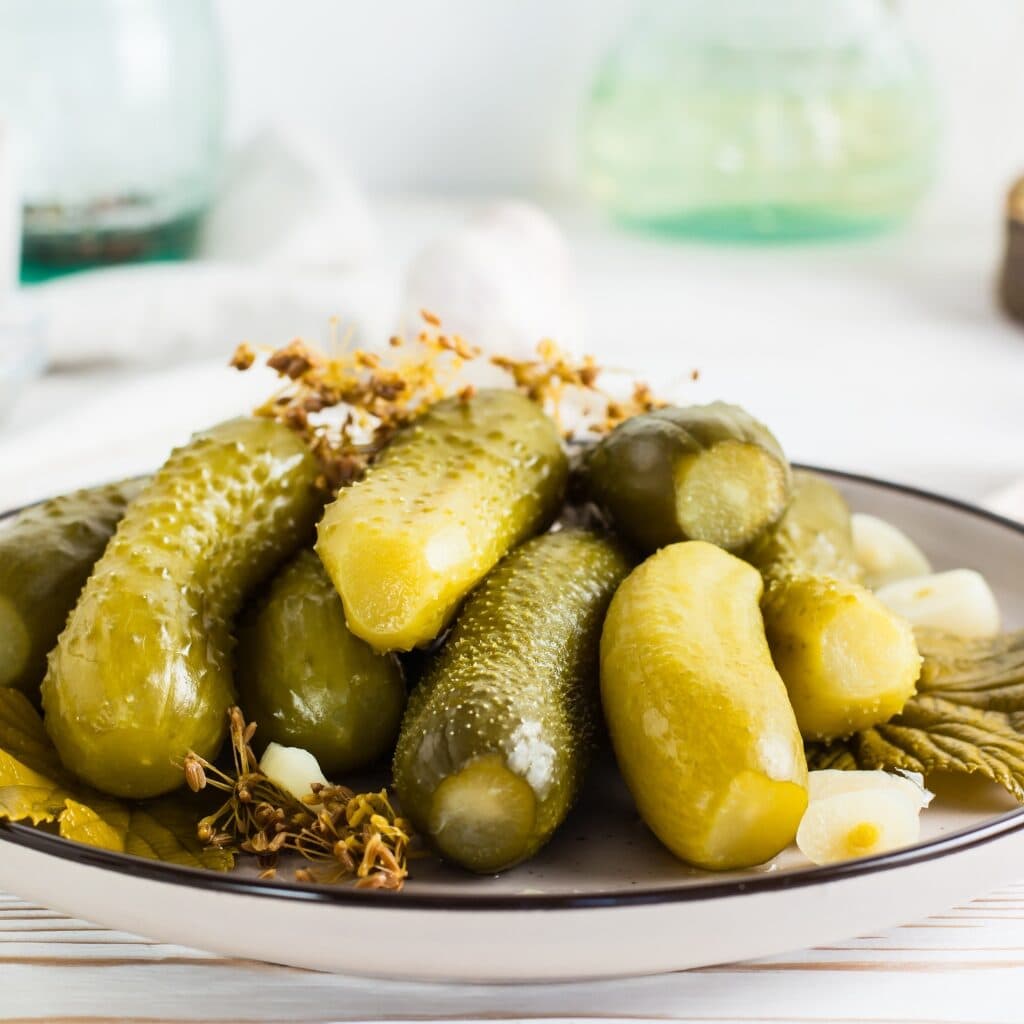
Types of Pickles
Pickles come from all over. And they come in all shapes, sizes, and tantalizing flavors, each with its own charm.
They can be tangy, sweet, or even spicy.
There are German pickles, simple fridge pickles, and even Kool-Aid pickles! WHAT.
Ready to dive into this briny adventure? Let’s get started!
Here’s a handy list to help you spot the differences and pick your perfect pickle.
1. Dill Pickles
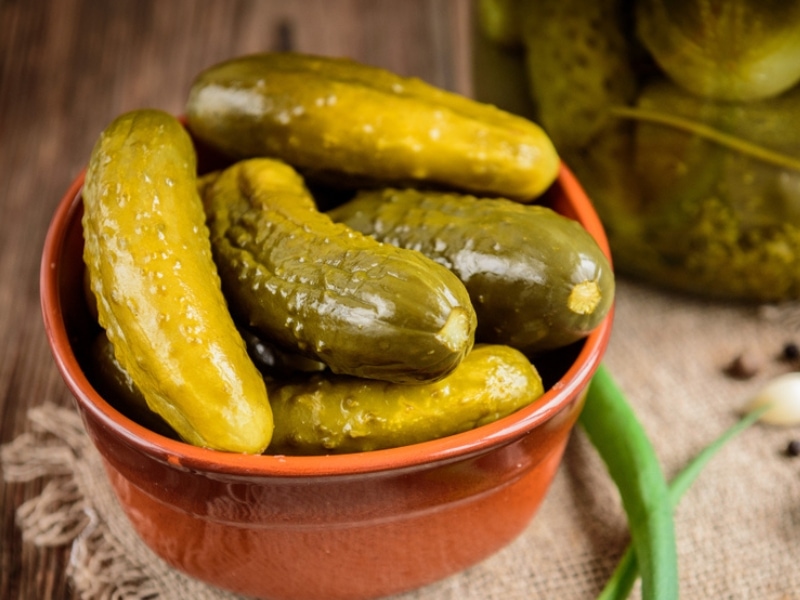
Dill pickles are the most famous pickle in the jar!
They feature a tangy combo of vinegar, pickling salt, and (you guessed it) dill. The type of dill doesn’t matter- it can be fresh, dried, or in seed form.
Dill pickles come in many cuts, from whole to spear-shaped. Or from chippy bites to thin slices.
These goodies can jazz up your sandwiches, burgers, and hot dogs. Dip them in batter and fry them for the best appetizer you will ever eat.
And you must try this dill pickle pasta salad!
There are so many ways to enjoy them.
2. Cornichons
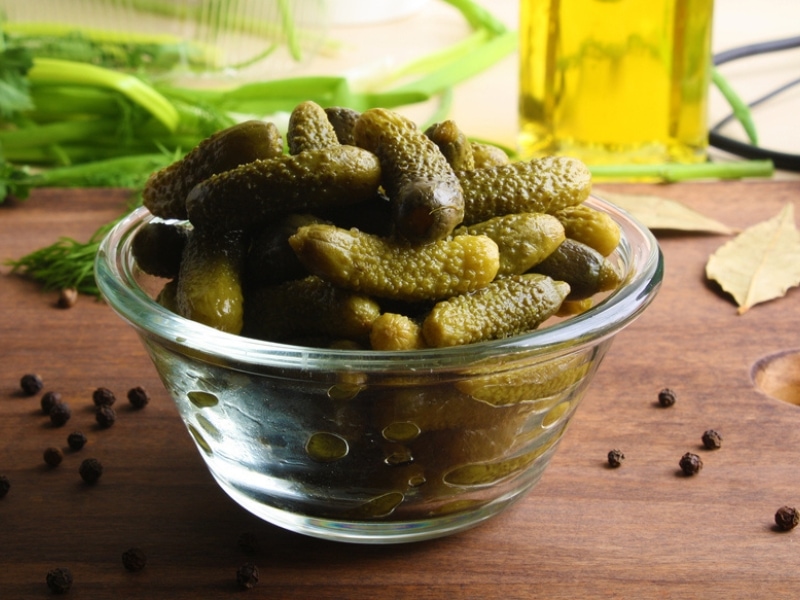
Have you ever mixed up cornichons and gherkins? I have. They look so similar.
While they are both petite, cornichons are even smaller than gherkins.
And so they are extra tasty and crunchy.
Like other pickles, cornichons are fermented or marinated. They love hanging out with herbs like dill, tarragon, or pepper.
If you want to make them, remember to add the French touch. Use mustard seeds, black pepper, and herbes de Provence for an authentic twist.
3. Gherkins
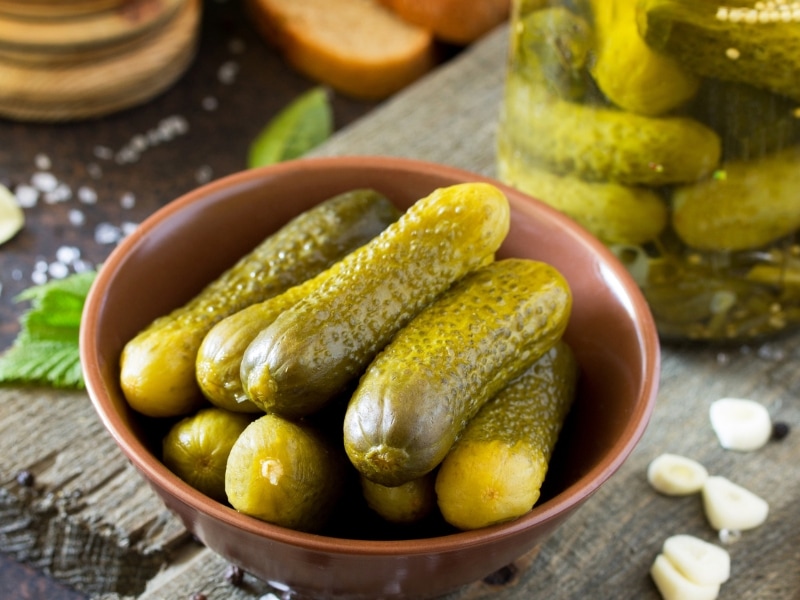
Gherkins are a specific variety of pickles that are smaller than your average cucumber.
They use young cucumbers, specifically varieties like Kirby or Persian to make gherkins.
But don’t let their size fool you! They pack a big, flavorful punch.
Gherkins are perfect for slicing up and tucking into sliders. But I like them best cut into spears for a Chicago-style hot dog.
4. Bread and Butter Pickles
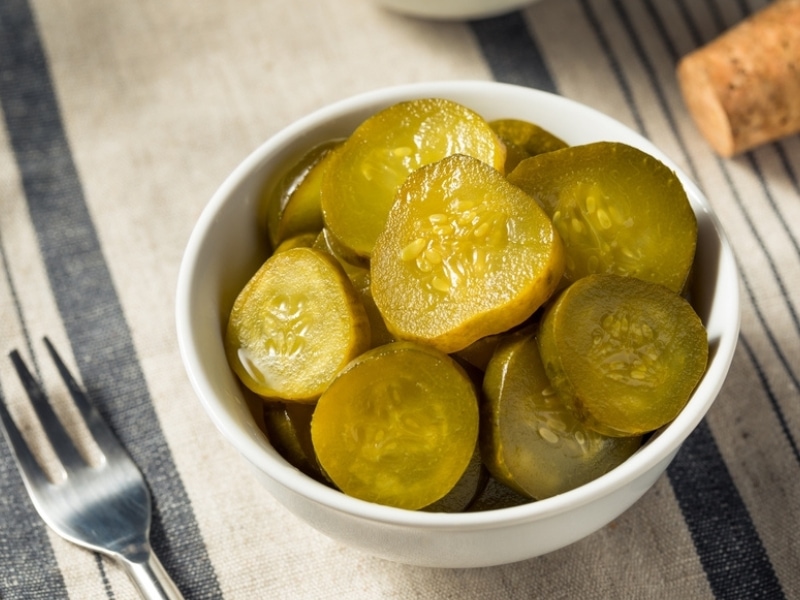
Bread and butter pickles are usually cut into chips and stacked on sandwiches and burgers. They are also much sweeter than dill pickles.
What’s behind that sweet touch? They marinate with sweet onions, white vinegar, sugar, salt, mustard, coriander, and celery. And that’s the secret sauce!
Many commercial brands like to sweeten the deal with high-fructose corn syrup. So, check the ingredients in the jar if you prefer non-artificial sugar!
Are you dressing up a classic cheeseburger? Or, serving spears as a side dish? Then, these sweet pickles are a sure-fire hit.
5. Candied Pickles
Have you ever heard of candied pickles? They are like the dessert of the pickle world.
If you’re a fan of sweet and tangy combinations, you are in for a treat!
Candied pickles, as their name suggests, are sweet pickles. But don’t mistake them for your regular sweet variety.
These are on a whole new level of sweetness! Often they border the realm of candies. Hence the name.
The magic starts when you take pickles and marinate them in a sweet concoction. It could be as simple as a mix of sugar, cider vinegar, and pickling spices.
This results in a pickle packed with a delightful sweet-and-sour punch.
But hang on. The fun does not stop there! Some food enthusiasts push the envelope and add actual candies into the mix.
Yes, pickles wrapped in fruit roll-ups exist- and they are as vibrant as they sound! It is a surprising, weird, and yet delicious combo.
6. Kosher Pickles
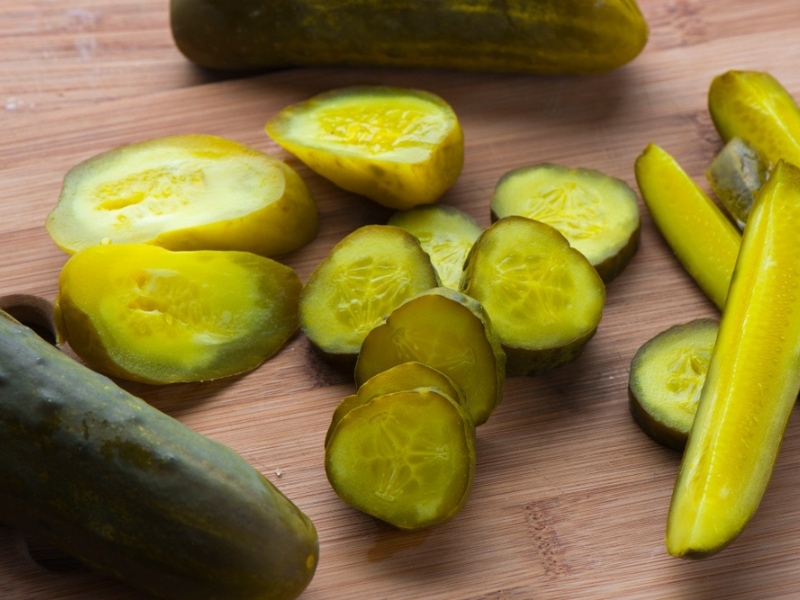
Kosher pickles, just like Kosher salt, are not always Kosher in the religious sense.
Here, “Kosher” refers to a pickling style using brine made with Kosher salt!
But the real stars here are the generous amounts of garlic and dill. #themoregarlicthebetter
Garlic is an essential part of the traditional recipe. So, if you are a garlic fan, Kosher pickles might be your perfect match!
7. Sour Pickles
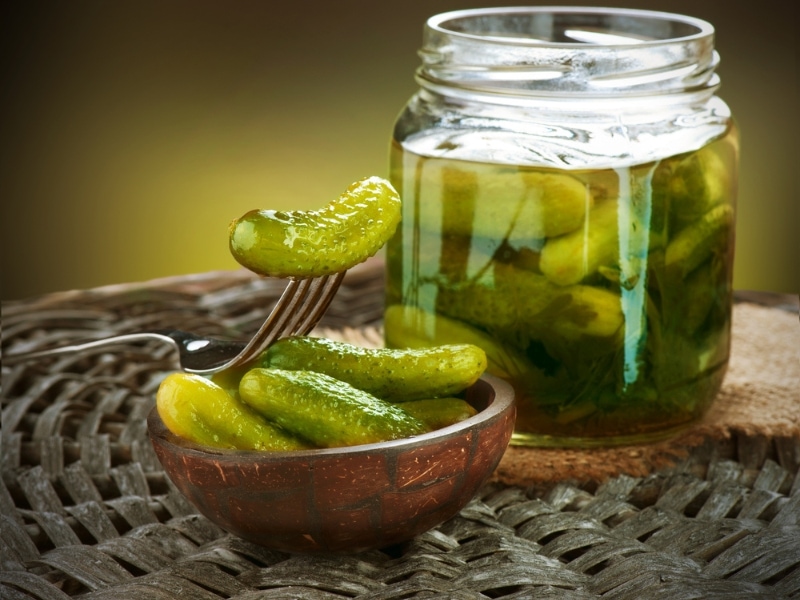
There are two kinds of sour pickles: full-sour and half-sour.
Full-sour pickles are lacto-fermented, not pickled. So, they skip the vinegar in the brine.
Instead, they rely on salt, water, and time (16 weeks!) to create their distinctive flavor.
Half-sour pickles follow the same fermentation process. But it’s not as long. To achieve a milder flavor, they only ferment for half the time.
There’s a sour pickle for you, whether you prefer a full-on tang or something mellower!
8. Hot Pickles
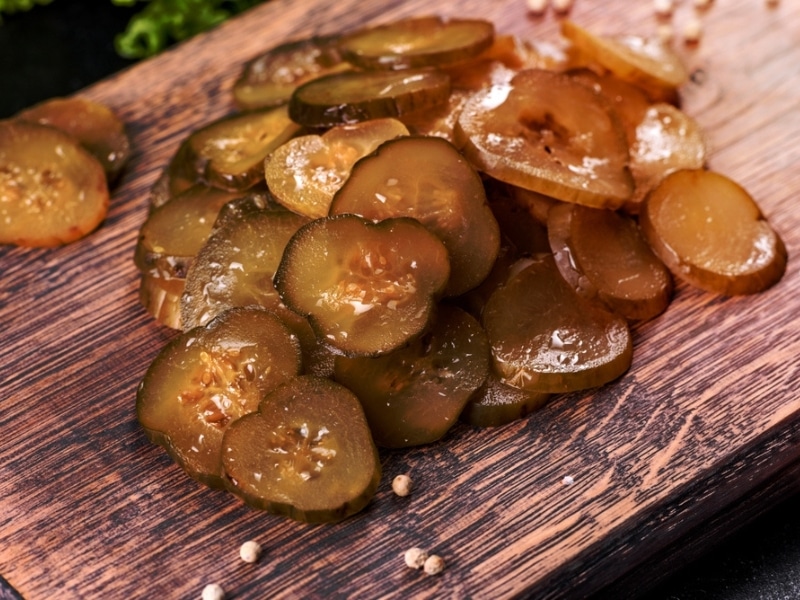
If you love spicy food, hot pickles are right up your alley!
Spicy pickles can add a flavorful kick to your sandwiches and burgers.
Plus, that spiced-up pickle juice works wonders in marinades and salad dressings.
There are countless ways to make fiery pickles if you like to DIY.
Just grab your favorite pickle recipe and throw in some spicy pepper. It is that easy. Jalapeños, habanero peppers, or cherry peppers are fabulous options.
But, if you are more of a buy-off-the-shelf person, the stores have plenty of options. And you can always go online to shop.
9. Polish or German Pickles
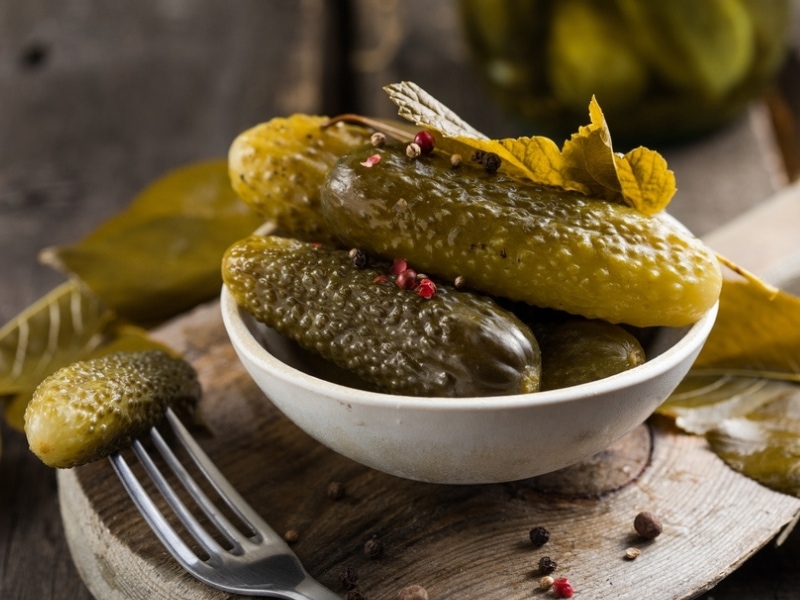
Polish or German pickles, while similar to dill pickles, are different.
They have a unique flavor thanks to herbs and spices. You will taste ingredients like caraway seeds, mustard seeds, and peppercorns.
These components give them an extra zing that distinguishes them from other pickles.
Traditionally, these pickles get their signature flavor from being pickled in wooden barrels.
Nowadays, you will likely find them in glass jars at the store. Luckily, their distinctive taste remains.
10. Hungarian Pickles
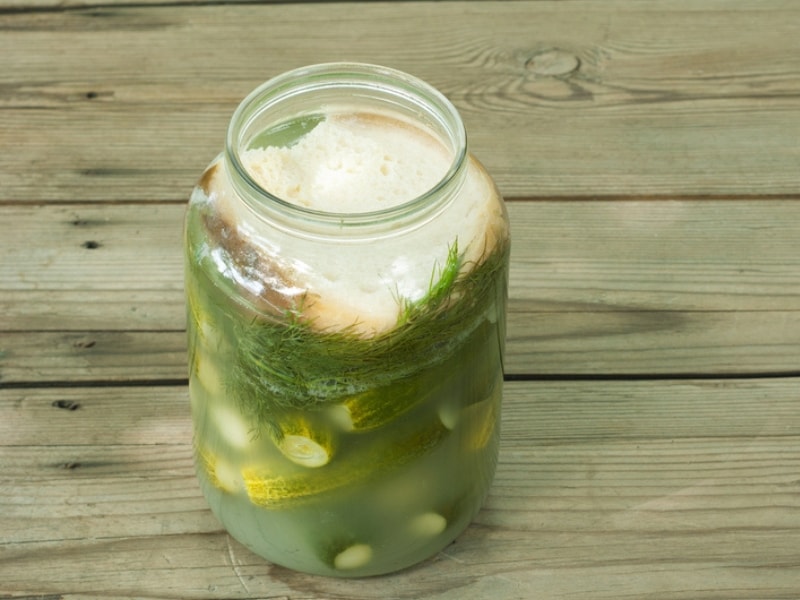
Hungarian pickles are like dill pickles in terms of ingredients. But they take a detour.
A crucial step in their making involves letting them bask in the sunlight. The bright sun aids in their fermentation.
So, they often wear the tag of ‘Hungarian sun pickles’ or ‘Hungarian summer pickles.’
Some Hungarian pickles use bread in the fermentation process. The bread acts as an air barrier and contributes complex sugars for fermentation.
11. Lime Pickles
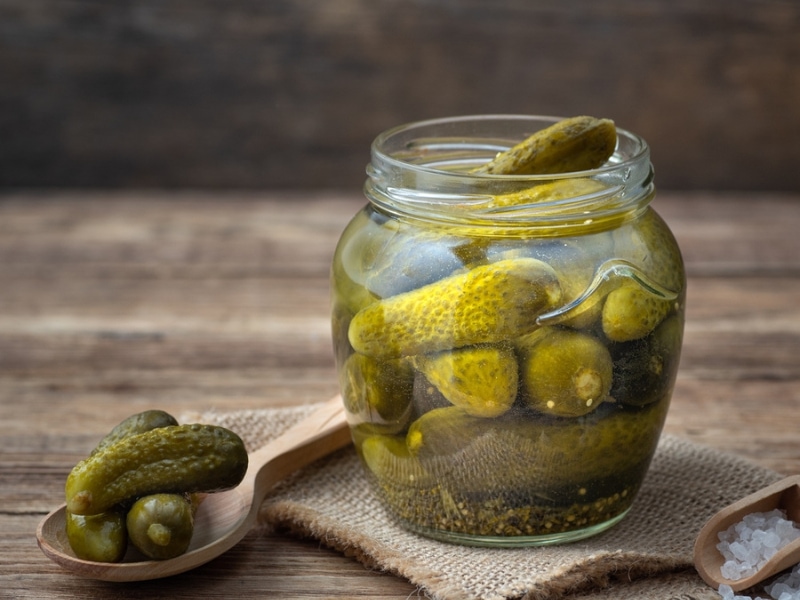
Don’t let the name fool you!
The ‘lime’ here stands for pickling lime. It is a white powdery substance popular in old-school canning recipes.
Its job? To make pickles crunchier than leaves in the fall.
But hold on before you dash to the store- a word of caution. Experts do NOT encourage this method anymore as it can pose health risks!
Too much pickling lime (an alkaline substance) can weaken the vinegar’s acidity. Low acidity can cause a bacteria party!
So, you better stick to safer pickling practices.
12. Kool-Aid Pickles
Believe it or not, Kool-Aid pickles are a real thing!
And yes, they’re made with that vibrant, sugary fruit drink we all know and love.
You may raise an eyebrow at the sound of pickles and fruit punch mixing it up. But these are quite a hit.
Born and bred in Mississippi, these colorful creations are affectionately called “koolickles.”
13. Refrigerator Pickles
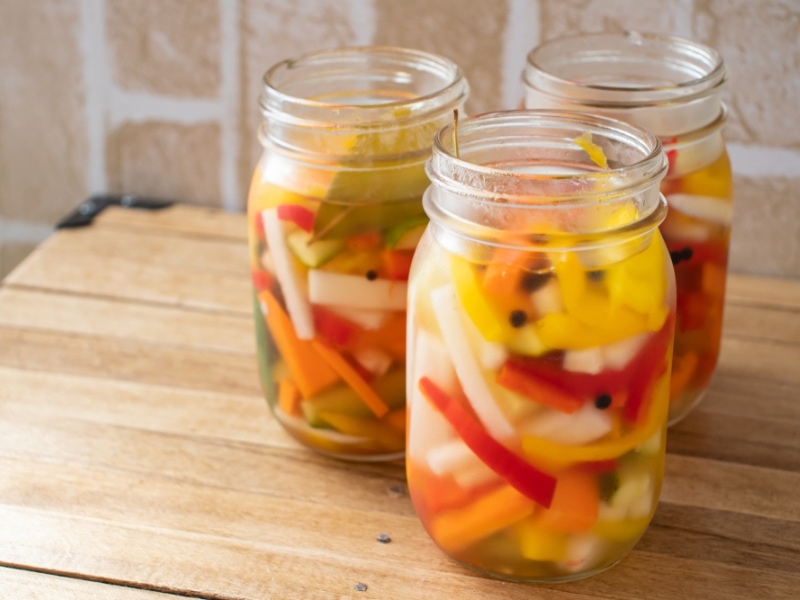
Are you looking for a faster way to preserve veggies? Consider making refrigerator pickles.
This method doesn’t need the meticulousness or most of the gear associated with traditional canning.
To make refrigerator pickles, add fresh veggies to a salty vinegar bath. Do not forget to add your favorite herbs and spices!
Then, pack the veggies and brine into jars. Seal them up and store them in the refrigerator.
How are Pickles Made?
Three methods of pickle making exist – refrigeration, processing, and fresh-pack. Each process produces a unique taste and texture.
Refrigeration
Refrigeration is the easiest pickling method. But it is not a long-term storage solution.
These are the kind of pickles you will have to eat every week. (No problem for my household!)
Add fresh cucumbers to a jar of pickling liquid- water, canning salt, and spices. Then, put them straight in the fridge.
These pickles are ultra-crisp but don’t last as long.
Processing
Processing creates “cured” or “fermented” pickles.
This method involves brining pickles in a salt-water mixture for several months.
Basically, you rinse the cucumbers and then submerge them in the seasoned liquid. Then, let it sit.
This lengthy process creates the sharpest flavors. So, they are worth the wait!
Fresh-Pack
Here, you preserve cucumbers in vinegar and pickle seasonings.
Then, they’re vacuum-sealed, pasteurized, and cooled, creating a stable product until opened.
Fresh-pack pickles maintain their color, offer a crunch, and balance flavor without overpowering.



